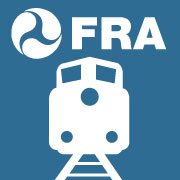
Jennifer Homendy, a member of the National Transportation Safety Board (NTSB), said that the Federal Railroad Administration (FRA) final rule for Class I railroads and certain smaller railroads to establish risk-reduction safety plans issued Feb. 18 falls well short of the intent of the Rail Safety Improvement Act (RSIA) that was passed by Congress in 2008.

NTSB member Jennifer Homendy
“As the lead @TransportDems staffer who drafted the Act, I’m glad the rule’s out but it doesn’t comply with the RSIA,” Homendy said on Twitter. “It leaves out commuter and passenger railroads (that rule has been stayed 9 or 10 times now) and it fails to require freight railroads to implement fatigue management plans as part of their risk reduction program (which was required in RSIA).”
Later in her Twitter thread, she cited five accidents investigated by NTSB involving both freight and passenger rail that were linked to fatigue and reminded her followers that fatigue management is on the NTSB’s most-wanted list in preventing railroad accidents.
She also mentioned that FRA has seemed to reverse course over the years as in 2015, agency leadership had told NTSB that fatigue management would be addressed in a final rule.
The final rule as published requires Class I railroads to compose an FRA-approved RRP plan.
“These comprehensive, system-oriented safety plans are required to identify and analyze hazards and their associated risks, and develop and implement plans to eliminate or mitigate those risks,” FRA said in a release announcing the final rule. “An RRP is designed to improve operational safety, complementing a railroad’s adherence to all other applicable FRA regulations. Each railroad must tailor an RRP for its individual operations, and the RRP must reflect the substantive facts on any hazards associated with each railroads’ operations.”
“Railroads’ ongoing evaluation of their asset base and employee performance associated with operations and maintenance, under FRA regulations, can now follow a more uniform path of standardization, towards further reducing risks and enhancing safety,” FRA Administrator Ronald L. Batory said in the release.
Transportation Secretary Elaine Chao said the final rule will improve freight rail safety in America in the same release.
It remains to be seen whether fatigue management will be addressed in a future rulemaking.
Read FRA’s final rule on risk-reduction programs as published in the Federal Register.
Related News
- After FRA rule, Jared Cassity explains why we still need the Rail Safety Act
- ALERT for L.A.-area members — operator stabbing suspect at large
- SMART-TD wins SEPTA members’ security in their chosen craft
- Shining brightly in the midst of darkness
- Early-bird pricing for TD National Training Seminar ends April 30
- SMART-TD endorses U.S. Sen. Mike Braun (R-Indiana) as the next governor of the Hoosier State!
- FTA action on bus, transit safety plans praised by SMART-TD
- 27 transit members reinstated back to work in Montebello, California
- FRA crew-size rule came from our collective power
- SMART-TD, FRA announce federal regulation requiring two-person freight crews